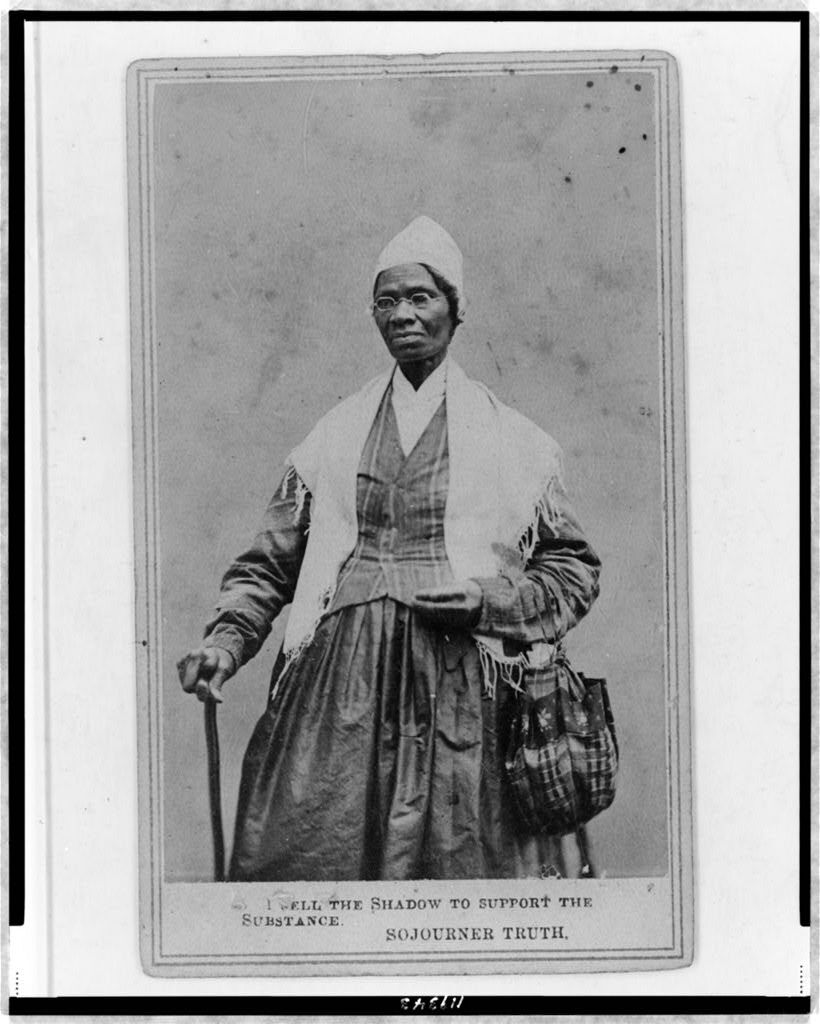AKRON, Ohio — Northeast Ohio’s history is deeply intertwined with Women’s Rights and Civil Rights history. For more than a century, leaders and activists have brought their messages to Ohio, including the famed women’s rights activist and abolitionist Sojourner Truth.
Truth was a gifted speaker and powerful orator who traveled speaking out for the rights of women and Black people. Her travels brought her to Akron in May 1851 for the Women’s Rights Convention.

It is at that gathering at the Universal Stone Church (now the location of the Sojourner Truth Building) where she delivered what has been dubbed her “Ain’t I a Woman” speech. While her message still resonates to this day, historians have long debated the exact wording of what she said that day.

Nell Irvin Painter, Edwards Professor of American History Emerita at Princeton University, is one of those historians as well as the author of the book "Sojourner Truth: A Life, A Symbol." In the book, Painter dives into the conflicting written accounts of the May 29, 1851 speech. News 5 spoke with Painter to learn more about the speech.
"When we speak about the women's conference in 1851, we already have a challenge, because there are two different versions of it. There's the version from the time from 1851, which is what historians would rely on. And there's another version from 12 years later by a white woman journalist,” Painter said.
The 1851 version Painter refers to was published on June 21, 1851 in the weekly publication, "The Anti-Slavery Bugle." It was written by the paper’s editor, Marius Robinson, who was also the secretary of the Women’s Rights Convention and hosted Truth during her time in Akron. Historians tend to rely on this version due to its timely writing and Robinson’s personal connection to Truth.
The version written over a decade after the fact by Frances Dana Gage and published in the New York Independent newspaper on April 23, 1863 is the one that contained the often-repeated phrase “Ain’t I a Woman."
“The slogan is the invention of a white woman journalist writing 12 years after the fact. So it has no particular claim on being the correct way of understanding what Sojourner Truth had to say that day,” Painter explained. “It was a fight between two white women writers. And the woman who invented the slogan, [Gage], was trying to prove that she had a better Sojourner Truth story than Harriet Beecher Stowe.”
Painter points out multiple factual inaccuracies in Gage’s retelling of the speech, including references to Truth’s 13 children — Truth had 5 children — and a shift to a more stereotypical dialect associated with enslaved people of the South, despite many historians pointing to Truth likely having a Dutch accent more associated with the people of Upstate New York, where she lived her early life.

“Sojourner Truth did complain that people were quoting her in dialect, were exploiting her," Painter said. "The problem was that Sojourner Truth did not read and write. And if you want to have your memory preserved the way you want to have your memory preserved, better to write it yourself. So everything we know of Sojourner Truth comes from somebody else. And so everybody who wrote her down, wrote her down for their own reasons.”
Boiling Sojourner Truth down to a slogan does her a disservice, Painter said.
“Stereotypes are frequent ways of ‘othering’ people," she said. "So the slogan says that Sojourner Truth is not like you and me. She's something different and foreign.”
Painter hopes people will dive deeper than the ‘symbolized’ Sojourner Truth to learn more about the woman behind the slogan.
“Here is someone who was born into slavery, which is an abject situation, who, through the power of the Holy Spirit, and her own intelligence, made her way as a public person, as an activist, as a feminist, as an anti-slavery activist. So she is important as a person in our public history," Painter said. “I hope now in the 21st Century, we can understand Sojourner Truth as an emblem of the diversity of the experiences of people of African descent all over the United States...Being a feminist and an abolitionist was only part of what she did in her life. There is much, much more.”
If you would like to learn more about Sojourner Truth and the differing accounts of her speech from the 1851 Women’s Rights Convention, check out The Sojourner Truth Project and Professor Nell Irvin Painter’s book, ‘Sojourner Truth: A Life, A Symbol’





